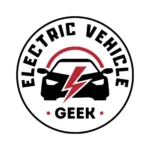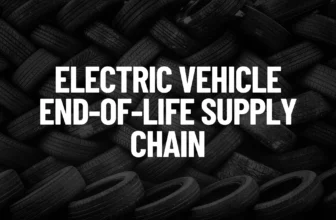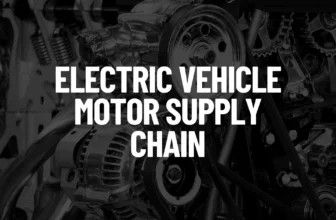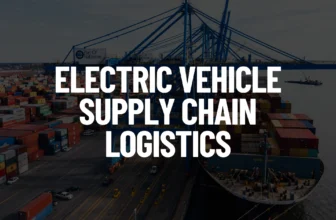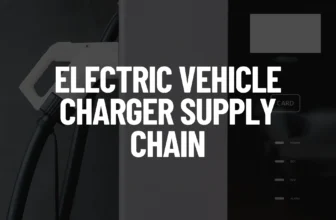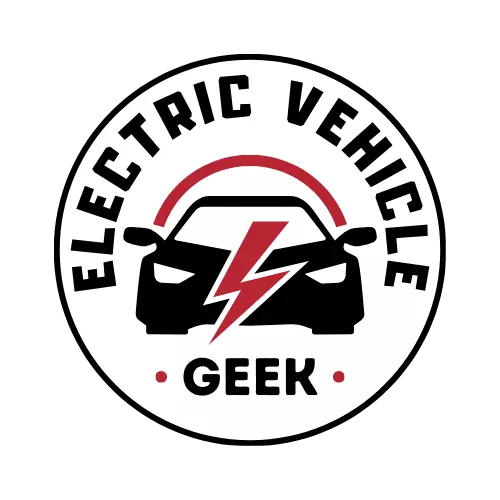The lithium-ion battery supply chain is a complex network of processes that transforms raw materials into lithium-ion batteries (LIB) that power electric vehicles (EVs).
The lithium-ion battery supply chain is a specialized subset of the electric vehicle battery supply chain. It encompasses the sourcing of raw materials, manufacturing of lithium-ion battery cells, assembly of modules and packs, and integration of lithium-ion battery packs into EVs. Additionally, the lithium-ion battery supply chain includes research and development efforts aimed at advancing lithium-ion battery technologies.
The lithium-ion battery (LIB) supply chain plays a central role in the electric vehicle supply chain, as batteries are one of the most critical components of EVs. Understanding the LIB supply chain is essential due to the rising demand for EVs and the growing strategic importance of lithium-ion batteries in the global transition to clean energy.
Table of Contents
Market Significance of Lithium-Ion Battery in EVs
Lithium-ion batteries are the most widely used battery type in electric vehicles, dominating the market due to their high energy density, efficiency, and relatively long lifespan.
Lithium-ion batteries account for approximately 60-70% of the battery market share for electric vehicles globally, with forecasts indicating that this figure will continue to rise as the demand for electric vehicles expands. The shift towards electric mobility is largely driven by the need for lower emissions, with LIBs being at the forefront of this technological transformation.
Over 90% of electric vehicles on the road today are powered by lithium-ion batteries, underscoring their critical role in achieving sustainability goals and reducing dependence on fossil fuels. The global EV market is projected to grow significantly, with EV sales expected to make up over 30% of all vehicle sales by 2030, further amplifying the demand for lithium-ion batteries.
The Lithium-Ion Battery Supply Chain Process
The LIB supply chain is made up of several stages, each contributing to the production of high-quality and efficient EV batteries:
Lithium-Ion Battery Raw Material Sourcing
The first stage involves sourcing critical raw materials such as lithium, cobalt, nickel, and graphite, which are essential for the production of LIBs. These materials are often concentrated in specific regions, such as lithium in South America and cobalt in the Democratic Republic of Congo, making the global supply chain vulnerable to geopolitical factors and resource scarcity.
Lithium-Ion Battery Cell Manufacturing
Lithium-ion cell manufacturing is considered the most important step in the battery value chain, accounting for up to 40% of the industry’s value creation by 2030
Once raw materials are sourced, they are processed and refined into the necessary components, including cathodes, anodes, and electrolytes, before being assembled into battery cells. There are different formulations of LIBs, the two main types being nickel-based and lithium iron phosphate (LFP). The specific mix of materials varies depending on the cell chemistry. Leading manufacturers like CATL (Contemporary Amperex Technology Co.) and LG Energy Solution are key players in this segment with China dominating the market.
Lithium-Ion Battery Module and Pack Assembly
Multiple lithium-ion battery cells are grouped to form a module, and multiple modules are assembled into a lithium-ion battery pack. Battery packs include a battery management system (BMS) for monitoring and thermal regulation.
Lithium-Ion battery module and pack assembly stage is vital as it determines the performance, safety, and reliability of the battery, ensuring that it can meet the energy needs of the vehicle, the module and pack assembly occur near vehicle manufacturing locations.
Lithium-Ion Battery Integration into EVs
The final step in the LIB supply chain is the integration of lithium-ion battery packs into electric vehicles. The performance of the battery directly affects the electric vehicle’s range, power, and overall efficiency, making it a key factor in consumer adoption.
Lithium-Ion Battery Research and Development
Given the rapidly evolving nature of battery technology, ongoing research and development (R&D) are crucial for enhancing energy density, reducing costs, improving charging speed, and increasing the lifespan of LIBs. Companies and research institutions are constantly exploring next-generation technologies, such as solid-state batteries, to further improve EV performance.
End-of-Life Management
This stage involves the dismantling of batteries and recycling or repurposing of battery materials. Battery recycling can reduce critical mineral demand and improve sustainability.
Key Aspects of the Li-ion Battery Supply Chain
- Geographic Concentration: The LIB supply chain, particularly in cell and component manufacturing, is highly concentrated in a relatively small number of countries, especially in Asia. China is a dominant player in the processing of critical minerals and in battery manufacturing.
- Technological Innovation: The LIB industry is characterized by rapid technological advancements and innovation, particularly in battery chemistry and manufacturing processes. This includes efforts to develop more efficient and higher-capacity batteries, as well as research into alternative materials.
- Supply Chain Challenges: The LIB supply chain faces several challenges, including potential bottlenecks in the supply of critical minerals, geopolitical risks, and the need for sustainable recycling practices.
- Vertical Integration: There is an increasing trend toward vertical integration in the LIB industry, with companies seeking to control more of the supply chain, from raw material extraction to battery manufacturing.
- Complexity: The supply chain is complex and involves multiple stages that may occur in different locations.
As a professional in the lithium-ion battery (LIB) supply chain, your expertise and insights are invaluable in deepening the impact of this blog.
I invite you to collaborate by sharing your knowledge, real-world experiences, and case studies. Together, we can explore the complexities of the LIB supply chain and provide actionable insights, innovative solutions, and best practices that can propel the industry forward.
If you’ve found my content valuable for your work in the lithium-ion battery supply chain, a letter of recommendation would be deeply appreciated. Your support will not only inspire me but also help me contribute meaningfully to the growth and efficiency of the LIB sector.
Let’s collaborate to drive the future of the lithium-ion battery supply chain and enhance the knowledge base that supports its continued evolution.
Feel free to reach out to me via email at james@electricvehiclegeek.com.
Thank you for your engagement and for being an essential part of this journey!
